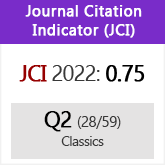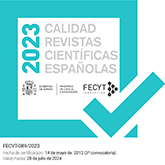Condensing cultural knowledge in 7th-century Spain: The «inventors of letters» in Julian of Toledo’s Ars grammatica
DOI:
https://doi.org/10.3989/emerita.2018.08.1633Keywords:
inventors of letters, Julian of Toledo, Eugenius II of Toledo, Isidore of Seville, condensation of cultural knowledge, «Isidorian renaissance»Abstract
The Ars grammatica attributed to Julian of Toledo contains two paragraphs (II 1.3–4) on the inventors of the respective alphabets that had played a role of importance in the literate cultures surrounding the Mediterranean. Both paragraphs first present the information in question-and-answer format and subsequently quote a poetic exemplum. The second exemplum reproduces carmen 39 by Julian’s teacher Eugenius II of Toledo, which is itself based on Isidore of Seville’s synthesis of «pagan» and Christian learning. The present contribution reconstructs the process of condensation and codification leading up to the relevant paragraphs in Julian’s Ars grammatica, and draws a number of conclusions regarding the intellectual climate of 7th-century Spain.
Downloads
References
Alberto, P. F. 2004: «Un poema de Eugenio de Toledo sobre los inventores del alfabeto en León, Archivo de la Catedral, fragm . 8 (carm . 40 Vollmer)», in Díaz y Díaz, M. C. (ed.), Escritos dedicados a José María Fernández Catón, León, pp. 29-39.
Alberto, P. F. 2012: «La scuola in versi: gli inventori degli alfabeti nella poesia della Spagna visigotica», Il calamo della memoria 5, pp. 267-284.
Banniard, M. 1989: Genèse culturelle de l'Europe: Ve–VIIIe siècle , Paris.
Beeson, C. H. 1924: «The Ars grammatica of Julian of Toledo», in Miscellanea Francesco Ehrle: Scritti di storia e paleografia. Volume I: Per la storia della teologia e della filosofia, Roma, pp. 50-70.
Boas, M. 1930: «Cato und Julianus von Toledo», RhM 79, pp. 183-196.
Carracedo Fraga, J. 2006: «Virgilio en la escuela visigótica», in Nascimento, A. A. and Alberto, P. F. (eds.), pp. 283-292.
Desbordes, F. 1990: Idées romaines sur l'écriture, Lille.
Döpp, S. and Geerlings, W. (eds.) 2002Ñ: Lexikon der antiken christlichen Literatur , Freiburg, Basel and Wien.
Fontaine, J. 1959: Isidore de Séville et la culture classique dans l'Espagne wisigothique, voll. I–II, Paris.
Funaioli, G. 1911: «Su Giuliano Toletano», RFIC 39, pp. 42-79.
Gasti, F. 1997: «Isidoro e la tradizione grammaticale», in Discentibus obvius: Omaggio degli allievi a Domenico Magnino, Como, pp. 31-51.
Giannini, S. 1996: Percorsi metalinguistici: Giuliano di Toledo e la teoria della grammatica , Milano.
Holtz, L. 1974: «Édition et tradition des manuels grammaticaux antiques et médiévaux», REL 52, pp. 75-82.
Holtz, L. 1981: Donat et la tradition de l'enseignement grammatical: étude sur l' Ars Donati et sa diffusion (IVe–IXe siècle) et édition critique , Paris.
Holtz, L. 2006: «Le De grammatica des Étymologies d'Isidore de Séville, structure générale et traitement des sources», in Nascimento, A. A. and Alberto, P. F. (eds.), pp. 55-68.
Jeudy, C. 2009: «Julian of Toledo (Lat. Julianus Toletanus)», in Stammerjohann, H. (ed.), pp. 771-772.
Kaster, R. A. 1988: Guardians of Language: The grammarian and society in late antiquity , Berkeley, Los Angeles and London.
Kleingünther, A. 1933: ΠΡΩΤΟΣ ΕΥΡΕΤΗΣ : Untersuchungen zur Geschichte einer Fragestellung , Leipzig.
Lindsay, W. M. (ed.) 1911: Isidori Hispalensis episcopi Etymologiarum sive Originum libri XX , voll. I–II, Oxford.
Maestre Yenes, M. A. H. (ed.) 1973: Ars Iuliani Toletani episcopi: Una gramática latina de la Espa-a visigoda. Estudio y edición crítica , Toledo.
Munzi, L. 1976: [Review of Maestre Yenes 1973], RFIC 104, pp. 471-479.
Munzi, L. 1980–1981: «Il De partibus orationis di Giuliano di Toledo», AION(filol) 2–3, pp. 153-228.
Munzi, L. (ed.) 1983: Il De partibus orationis di Giuliano di Toledo, Roma.
Nascimento, A. A. and Alberto, P. F. (eds.). 2006: IV Congresso Internacional de Latim Medieval Hispânico, Lisboa, 12–15 de Outubro de 2005: Actas , Lisboa.
Poirel, D. 2009: «Isidore of Seville», in Stammerjohann, H. (ed.), pp. 724-726.
Reichert, E. 2002: «Braulio von Saragossa», in Döpp, S. and Geerlings, W. (eds.), pp. 130-131.
Riché, P. 19723 : Éducation et culture dans l'Occident barbare: VIe–VIIIe siècle , Paris.
Riou, Y.-F. 1972: «Quelques aspects de la tradition manuscrite des Carmina d'Eugène de Tolède: du Liber Catonianus aux Auctores octo morales », RHT 2, pp. 11-44. https://doi.org/10.3406/rht.1973.1069
Röwekamp, G. 2002: «Isidor von Sevilla», in Döpp, S. and Geerlings, W. (eds.), pp. 361-363.
Sehlmeyer, M. 2002: «Julian von Toledo», in Döpp, S. and Geerlings, W. (eds.), p. 408.
Stammerjohann, H. (ed.) 2009Ç: Lexicon grammaticorum: A Bio-Bibliographical Companion to the History of Linguistics , vols. I–II, Tübingen.
Strati, R. 1986: «Presenze virgiliane in Giuliano di Toledo», Maia 38, pp. 41-50.
Surmann, B. 2002: «Eugenius II. von Toledo», in Döpp, S. and Geerlings, W. (eds.), p. 238. PMid:12116876
Swiggers, P. 1984: «Isidore de Séville et la codification de la grammaire latine», StudMed 25, pp. 279-289.
Swiggers, P. and Wouters, A. 2010: «Condensed Grammatical Knowledge in Antiquity: Doxographical accounts of the parts-of-speech system», in Horster, M. and Reitz, C. (eds.), Condensing Texts – Condensed Texts, Stuttgart, pp. 135-163.
Thraede, K. 1962a: «Erfinder I (historisch)» and «Erfinder II (geistesgeschichtlich)», in Reallexikon für Antike und Christentum , vol. V, pp. 1179-1278.
Thraede, K. 1962b: «Das Lob des Erfinders: Bemerkungen zur Analyse der Heuremata - Kataloge», RhM 105, pp. 158-186.
Treffort, C. 2013: «De inventoribus litterarum : l'histoire de l'écriture vue par les savants carolingiens», SVMMA 1, pp. 38-53.
Yarza Urquiola, V. and Andrés Santos, F. J. (eds.) 2013: Isidoro de Sevilla, Etimologías. Libro V: De legibus – De temporibus, Paris.
Downloads
Published
How to Cite
Issue
Section
License
Copyright (c) 2018 Consejo Superior de Investigaciones Científicas (CSIC)

This work is licensed under a Creative Commons Attribution 4.0 International License.
© CSIC. Manuscripts published in both the printed and online versions of this Journal are the property of Consejo Superior de Investigaciones Científicas, and quoting this source is a requirement for any partial or full reproduction.All contents of this electronic edition, except where otherwise noted, are distributed under a “Creative Commons Attribution 4.0 International” (CC BY 4.0) License. You may read here the basic information and the legal text of the license. The indication of the CC BY 4.0 License must be expressly stated in this way when necessary.
Self-archiving in repositories, personal webpages or similar, of any version other than the published by the Editor, is not allowed.














